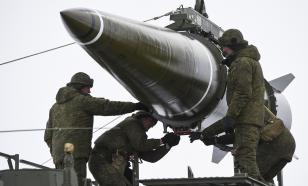"Furnace play" in the films Alexander Nevsky and Ivan the Terrible
In the middle of the 13th century a fierce struggle with crusaders was led by the generation of hostage children
In 1200 catholic missionary Bishop Albert von Buxhovden accompanied crusaders' army and fleet to the Eastern Вaltic. He knew how to eliminate the Orthodoxy and paganism, which managed to peacefully coexist in the region, and convince the residential population of the necessity to choose the western values. As soon as they disembarked at the place of the future Riga, crusaders taught the "barbarians" the first "civilization" lesson taking their children hostage. With blessing of Bishop Albert capture of children became a normal practice of Catholic Knights Orders in the Eastern Baltic, and crusaders acquired a fast reputation of children torturers, servants of Pharaoh and Herod (Heinrich of Latvia. Livonian Chronicles. Moscow-Leningrad, 1938).

Although historical documents do not have direct evidence of tortures or murders of hostage children, it is not necessary to be a priest or a doctor to realize the depth of psychological traumas that echoed in folk stories about struggle with the Teutonic Order. It is remarkable that in the middle of the 13th century a fierce struggle with crusaders was led by the generation of hostage children. Legendary heroes Herkus Mantas and Skomantas who had been captured by German knights and brought up by western missionaries became irreconcilable enemies of the Catholicism.
Also in old Russian literature crusaders are depicted as murderers of children. In 1269 and 1299 the Teutonic inquisitors burnt Pskov children alive who found refuge in the Snetogorsky and the Mirozhsky monasteries (middle redaction of the "Story of Dovmont", V.I.Okhotnikova, Story of Dovmont. Study and texts, Leningrad, 1985). In 1406 during the siege of Voronich fortress near Pskov the Germans "filled two boats with corpses of the slaughtered children". "Such an abomination was unheard of", chronicler notes (1st and 3rd Pskov chronicles, Complete works of Russian literature, vol.V, 1-2, Moscow, 2000).
Director Eisenstein and composer Prokofiev made an original summary of historical facts in their films Alexander Nevsky and Ivan the Terrible. In Ivan the Terrible Polish king Sigizmund II August, his courtiers and Livonian knights-brothers discussed "superstitions of Moscovites": "Moscow Barbarians should not be allowed into the family of the enlightened peoples of the West. The Moscovites eat children alive!". In Alexander Nevsky a collective image of crusaders is presented with their tradition to take children hostage. Entering the liberated Pskov Alexander Nevsky takes saved children in his hands. A parallel with the biblical "furnace play" is obvious: the Russian saint warrior is similar to an angel who saved from fiery furnace three youths cast into it by the ungodly Chaldeans.
In Ivan the Terrible musical and visual theme "Shuisky and the Hound Keepers" is dedicated to the traumas of the childhood that determined the future fate of Ivan. Contrary to the will of Eisenstein and Prokofiev the psycho-analytical prologue to the two-part film was excluded from the final version. Short fragments of the prologue were used in the episode in the 2nd part, when Ivan recalls his childhood in the talk with Phillip Kolychev. However the music of the episode "Shuisky and the Hound Keepers" became one of the leitmotivs of the film. The theme of hostage children was presented by Ivan's childhood, boyar's plot against infant Dmitry, tragedy of Vladimir Staritsky - child by mind. The theme was strengthened by the "Furnace play" about the three youths in the fiery furnace. In the final scene of the film the psychopathic circle of violence closed up, uniting the childhood of Ivan and his son Dmitry together with death fear in the eyes of the murdered Vladimir Staritsky.
In their joint works the Russian director and composer managed to attain the spiritual depths. And it is not so important that historical bishop Albert von Buxhovden did not execute hostage children. For example, in the Ken Russel's film version of Pete Townshend's rock-opera "Tommy" it is not clear if the murder of captain Walker by Nora and Frank was a real event or not. However the trauma that was inflicted by the mother and the stepfather to the child was quite real. At the age under 12 the impression of adult's injustice in the subconsciousness of a child is very bright and strong. Nobody should make children hostages for the sins of adults and this truth is reminded to us by both the "Furnace play" and by Eisenstein and Prokofiev's films.
Yuri Klitsenko
Subscribe to Pravda.Ru Telegram channel, Facebook, RSS!


